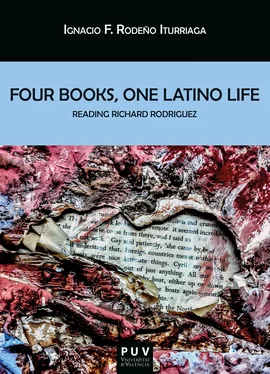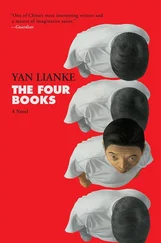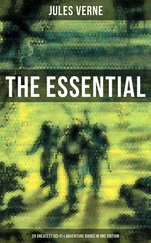Postcolonial and multicultural critics also propose alternatives to the traditional notion of self. This becomes germane to the analysis of autobiographies by non-mainstream authors. Calling Western norms of identity and experience into question, these autobiographers bring their status as the West’s “others” and their demand to be taken into account within the cultural discourse into the limelight. For these authors and critics, contemporary autobiographies are invested with a redemptive quality that is essential to the genre. These autobiographical acts construct subject positions through which to contest displacement and marginality, and posit a new subjectivity, based on its hybrid, transcultural, diasporic, and/or nomadic nature. These narratives of the self move the “I” towards the collective and challenge traditional boundaries of identification. Derridean deconstruction, Barthesian semiotics, and Foucaultian discursive notion of power are significant theoretical foundations.
Karl Weintraub in The Value of the Individual (1978) saw in autobiography the genre that emerged as corollary of the valuation of Western culture. Weintraub focused on the history of individuality from Saint Augustine to Goethe, and he noticed a clear escalation in individualism once the 19 thcentury began. This rapid development has its explanation in the fact that it is not until then that the point of view of the individual and the self-consciousness of the author were articulated with considerable prominence. Then, autobiography starts to be judged by its truth-value, which is no other than the subjective truth of the author’s opinion on his or her life. Because author and subject are considered the same entity, there is the need of certain consistency between style and subject: autobiography.
When it comes to establish a theory of the autobiographical genre, scholars have explored many more variations of autobiography as an individual or social dimension of the intellectual or moral character, depending on the times. However, the most outstanding intellectual when it comes to formulate a formal generic definition of autobiography is Philippe Lejeune. He is the first theoretician to devote a considerable effort to establish categorical differences between autobiography and the novel, even though the former employs resources that one normally associates to the latter, let alone the fusion of autobiography and fiction by some writers. Lejeune tried to define autobiography in L’Autobiographie en France (1971) but he realized that such definition needed to be further clarified and refined, in part because the theoretical discussion surrounded the same triangle: fiction, biography and autobiography and the relationships between the latter and the former two terms. In order to shed light on the nature of the genre, Lejeune published in 1975 his fundamental essay Le Pacte autobiographique . For Lejeune, autobiography consists of a “[r]etrospective prose narrative written by a real person concerning his own existence, where the focus is his individual life, in particular the story of his personality.” (4) This definition requires that the text is narrative and in prose; its subject is the life of an individual and/or the story of a personality; the author and narrator are one and the same; the narrator and the protagonist coincide, and the narrator takes a retrospective viewpoint. Thus, Lejeune isolates autobiography from memoirs (these are not the account of an individual life); from biography (the narrator is not the same as the protagonist); from personal novels (where author and narrator are not one); from diaries and journals (where the narration is not retrospective); from the autobiographical poem (since the text would not be in prose); and from the essay (which Lejeune does not regard as having a retrospective point of view nor a narrative form).
Therefore, according to Lejeune, the textual attribute by which one can distinguish more autobiography from fiction is framed in a contract, or pact, between the text and the reader. This pact starts with the attribution of authorship from the title page of the text, and continues the length of the work. Thanks to this autobiographical pact; that is, by means of the autobiographer’s first name, the self-referential dimension of the text finds verifiable referents in society and in history. Within the tradition of first person narrative, which is the dominant tradition in the genre, identity is shared at the same level by author, narrator, and protagonist. One can state that narrative in autobiography is the statute of self-reference, and the identification among them of the three constituents of the self in the text. This “pact” establishes the identity among author, narrator, and protagonist, and serves to uphold the borders between autobiography and the novel. Contrary to other forms of fiction, Lejeune observes that autobiography offers actual, non-hypothetical information on an outside reality, which in turn makes him consider the issue of authenticity in autobiographical writing. Because of the “autobiographical pact,” Lejeune is able to demarcate the space of autobiography against other neighboring fields, such as that of biography, memoirs, diaries, biographical sketches, or first person novel, since one cannot detect in these the autodiegetic identification that the French theoretician posits.
While Lejeune allows for some relaxation in the limits he establishes –”[i]t is obvious that the different categories are not all equally restrictive: certain conditions can be met for the most part without being satisfied completely,” (5)– his definition of autobiography is meant to be quite limiting. And while he distinguishes between autobiographical poems and autobiographies, other contemporary scholars see the possibility of an autobiography in poetic form. Likewise, some autobiographies can adopt features proper to the essay form; namely those of Richard Rodriguez, for instance.
The crucial element for Lejeune is the distinction between autobiography, biography and the personal novel, which he summarizes in the strict observance to the following features: the author, narrator and protagonist must be identical in the case of autobiography. This has been summarized among the scholars of the genre as the “autobiographical pact,” echoing Lejeune’s title. By calling this a pact, it stresses the need of the reader to agree to read the text with the implied accord that protagonist, narrator and author are one and the same entity.
Lejeune himself observed that this autobiographical pact is not without problems. These issues arise in part from the challenges that the notion of identity presents, especially in regards to its inscription in the text and its relation to the construction of a discourse. The French scholar asks himself how the author’s and narrator’s identity appear in the autobiographical text. In some instances, he contends, there may be narration in third person and, thus, identity is not ascertained by the use of the “I.” The reader, then, may be facing a biography in spite of being consistent with the essence of the autobiographical genre. Since this is not the case in the autobiographies of Rodriguez, we will set aside these considerations. In Rodriguez’s case, the “I” does not lose himself in anonymity, but there is a proper name behind the first person, following Lejeune’s assertion. When it comes to the written autobiography, the proper name along the title or on the cover assumes responsibility and is automatically linked to the “I” of the text. Furthermore, it is the only incontestable link between the text and the world beyond it. By social convention, the author is a real person responsible for the creating a discourse, whose existence is beyond doubt. To this effect, pseudonyms are but another given name; however, they essentially do not alter anything regarding the issue of identity, especially since in the text the author might explain the origin of such pen name. To Lejeune there is a distinction when it comes to considering the authorship of autobiographical texts: there has to be other non-autobiographical texts for the autobiographical space to exist, in other words, to instill in the reader a sign of reality. Autobiography, therefore, assumes an identity claimed at the level of enunciation. The uttered similarity between the life of the character and the author is secondary, while the texts where there is no claimed identity but the reader suspects of similarity between protagonist, narrator and author are autobiographical novels. The autobiographical pact allows no room for guessing or suspecting: there must be no doubt, or it must be explained at the beginning of the text, that the “I” refers to the author. In the case of the four texts analyzed in this book, the author has explicitly declared them as autobiographies. In this way, Rodriguez’s autobiographies align with Lejeune understanding of identity: “a fact immediately grasped –accepted or refused, at the level of enunciation.” (21)
Читать дальше












